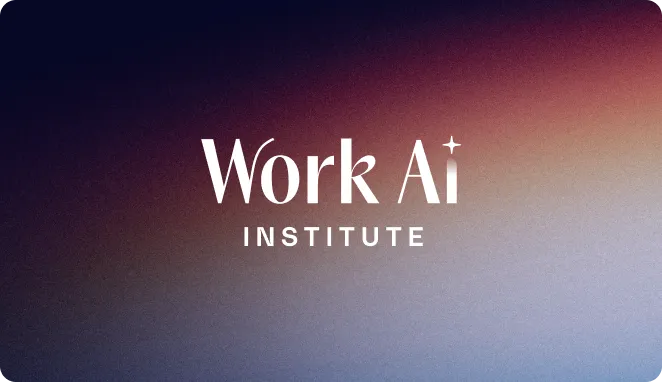- AI is transforming healthcare payer operations by streamlining complex workflows such as claims adjudication, prior authorization, audit readiness, and member support—delivering measurable improvements in efficiency, decision quality, and regulatory compliance without replacing human expertise.
- Despite its potential, widespread AI adoption among payers is challenged by data silos, integration complexity, rigid security requirements, and difficulties in driving user adoption, highlighting the need for solutions built specifically for the healthcare environment.
- Purpose-built platforms like Glean accelerate real AI value for healthcare payers by securely connecting to existing enterprise systems, supporting compliance and audit readiness, and enabling teams to access knowledge and make decisions quickly within their current workflows.
Healthcare payers are under pressure to do more with less. Shrinking margins, rising administrative costs, growing compliance demands, and high member expectations are stretching operations thin. These aren’t new challenges, but the urgency to solve them has never been greater.
AI is becoming a key part of that solution. According to McKinsey, 85% of healthcare payers are exploring or piloting generative AI, signaling a clear shift from experimentation to implementation. The focus is now on embedding AI into real workflows — helping teams reduce costs, move faster, and make better decisions with less friction.
Still, many payers are asking the same question: How do you turn AI into real operational value — not just another pilot?
This blog explores how AI is transforming healthcare payer operations, where it delivers the most impact, and why a platform like Glean is purpose-built to help payers scale AI securely and effectively.
What AI means for health plans today
In healthcare payer operations, AI isn’t about replacing people — it’s about making it easier for them to do their jobs. The most impactful AI technologies today support smarter decision-making, faster knowledge access, and more efficient execution of complex tasks. These tools include large language models (LLMs), retrieval-augmented generation (RAG), semantic search, and conversational interfaces that let teams ask questions and get answers as naturally as speaking to a colleague.
Traditional automation tools are built for linear, rules-based processes. But many payer workflows aren’t that simple. They rely on human judgment, policy interpretation, and context that spans multiple systems. That’s where AI excels.
Consider a few examples:
- A claims analyst needs to reference historical denials for a high-cost inpatient procedure.
- A nurse reviewer wants to verify medical necessity criteria across multiple plans.
- A compliance officer is preparing documentation for a CMS audit.
These are not one-click processes. They require navigating policy manuals, contract files, case history, and regulatory guidance — often stored in different systems. AI helps bring that information together, making it easier to move from question to action with less time spent searching and more confidence in every decision.
Where AI delivers the most value for healthcare payers
Payers are already seeing the benefits of AI in their most complex and cost-sensitive workflows. These early implementations are showing measurable improvements in decision quality, operational speed, and regulatory compliance — not by replacing people, but by giving teams faster, easier access to the knowledge they need.
Claims adjudication and payment accuracy
Claims processing is one of the most resource-intensive functions in any health plan. AI helps examiners retrieve plan-specific edits, historical denials, and contract language in seconds. This reduces manual rework, lowers error rates, and improves first-pass adjudication — a critical lever for payer margins.
Fraud, waste, and abuse also remain persistent threats. The Department of Justice and Office of Inspector General estimate that payers lose up to $100 billion each year due to improper billing, duplicate claims, and fraud. AI enables SIU teams to search across rules, alerts, and claim histories to flag anomalies faster and reduce financial leakage.
Prior authorization
Delays in prior authorization continue to frustrate providers and members alike. According to the American Medical Association’s 2024 AMA prior authorization physician survey, the average physician handles more than 39 prior authorizations per week — and 93% report that the process leads to delayed treatment. AI helps payer teams move faster by surfacing the right plan criteria, required documentation, and escalation contacts, all in one place. This improves turnaround times, reduces denials, and helps maintain strong provider relationships.
Audit readiness and regulatory compliance
Responding to CMS, RADV, and state-level audits requires fast access to version-controlled, source-cited documentation. AI supports compliance by locating the right policies, coverage criteria, and claims records — complete with timestamps, authorship, and source files — so teams can respond quickly and defensibly.
Member and provider support
Call center agents and support reps field complex questions every day, often spanning Medicare Advantage, Medicaid, and commercial lines. AI helps them deliver consistent, accurate responses by pulling relevant information from across systems like Salesforce, policy repositories, and ticketing tools. This improves resolution times, enhances member satisfaction, and reduces training time for new hires.
Sales and RFP acceleration
Commercial teams and proposal managers often work under tight deadlines when responding to employer or government RFPs. AI speeds up the process by making it easy to find previous responses, network coverage details, pricing models, and compliance attestations. This not only saves time, but also improves win rates by ensuring proposals are complete, consistent, and aligned with plan capabilities.
These use cases show how AI can enhance human expertise, not replace it. By making institutional knowledge easier to access and act on, AI helps payer teams work more efficiently, reduce risk, and deliver better service across every function.
Key barriers to adoption
Despite the industry’s digital progress, core workflows like claims processing still rely on too many manual steps. According to the 2024 CAQH Index, payers could save up to $20 billion each year by automating common transactions such as claim status updates, eligibility checks, and prior authorization reviews. AI can make this automation smarter by connecting relevant plan documents, edits, and historical context — all of which help reduce errors and improve adjudication rates.
Yet even with rising interest in AI, many payer organizations find it difficult to move beyond pilot programs. Four key challenges tend to get in the way:
1. Data silos
Most payer environments include a mix of legacy systems like Facets, InterQual, Availity, and SharePoint. These tools don’t always speak the same language, and important knowledge is often buried in PDFs, spreadsheets, or custom portals. AI can only deliver value when it has access to these sources — and when it can interpret them in context.
2. Security and compliance concerns
Payers operate in one of the most tightly regulated industries in the country. With protected health information (PHI) at the core of many workflows, any AI solution must meet strict requirements around HIPAA compliance, CMS audit readiness, and SOC 2 standards. Security isn’t optional — it must be built in from day one, along with role-based access control, traceability, and deployment flexibility.
3. Integration complexity
Off-the-shelf AI tools and open-source builds often run into trouble when it’s time to integrate with internal systems. Without pre-built connectors or governance workflows, IT teams are left stitching together siloed data manually — a process that slows progress and rarely scales. The result is that many promising pilots never make it to production.
4. Change management and adoption
Technology alone isn’t enough. Even the most powerful AI platform won’t succeed if teams don’t use it. To drive adoption, AI needs to be embedded into familiar tools and workflows, with an intuitive interface that feels natural to use. That’s what helps teams trust the results and return to it consistently.
To overcome these challenges, payers need more than a generic chatbot or standalone pilot. They need a platform designed for the realities of healthcare — one that integrates easily, respects existing governance, and delivers measurable results from day one.
Why Glean is purpose-built for healthcare payers
Glean is a Work AI platform that helps healthcare payers make faster, more informed decisions by turning their internal knowledge into on-demand answers. It connects to over 100 enterprise systems out of the box — including Salesforce, SharePoint, InterQual, ServiceNow, and FHIR APIs — and respects existing access controls so users only see the information they’re authorized to access.
Unlike generic copilots or standalone AI pilots, Glean is designed to fit naturally into a payer’s environment. It helps teams get more value from the tools and processes they already rely on — without the need to rip and replace.
Faster, more confident decisions across departments
Whether a claims analyst is reviewing a complex case or a proposal lead is preparing an RFP response, Glean brings together the information they need in seconds. That includes plan documents, policy text, past denials, pricing exhibits, and internal discussions — all grounded in your real data, not guesses or approximations.
Built-in compliance and audit readiness
Every answer Glean provides includes a clear citation with document title, author, timestamp, and source system. That means when teams respond to CMS audits or internal reviews, they can trace answers back to the original file — ensuring decisions are defensible and audit-ready.
Enterprise-grade security and governance
Glean mirrors your organization’s existing permission models and access rules. It supports deployment models that meet payer requirements, including on-premises options for teams with stricter infrastructure or data residency needs. That means you can scale AI securely without compromising your compliance posture.
No-code integration and fast time to value
Glean integrates directly into the systems your teams already use. There’s no need to invest in new licenses or retrain employees on a new interface. Teams can begin using Glean in weeks, starting with high-impact workflows like prior authorization, claims research, and audit preparation — then expanding from there.
Real business outcomes for real payer challenges
Payers using Glean have reported improvements across critical metrics: lower administrative expense ratios, reduced turnaround times for prior auths, higher win rates on government contracts, and stronger fraud detection. These gains don’t require more headcount or disruptive change — just better access to the knowledge your teams already have.
Glean doesn’t replace your workflows. It removes the friction that slows them down.
Get started with AI that actually works for payers
AI has the potential to change the way healthcare payers operate — but only if it’s applied thoughtfully, securely, and at scale. With the right foundation, AI becomes more than a tool. It becomes a trusted part of how your teams work, make decisions, and deliver value.
Glean helps payers unlock the full value of their institutional knowledge, streamline their most complex workflows, and meet the demands of today’s healthcare environment.
Want to see it in action? Request a demo or download the healthcare whitepaper to learn more.









